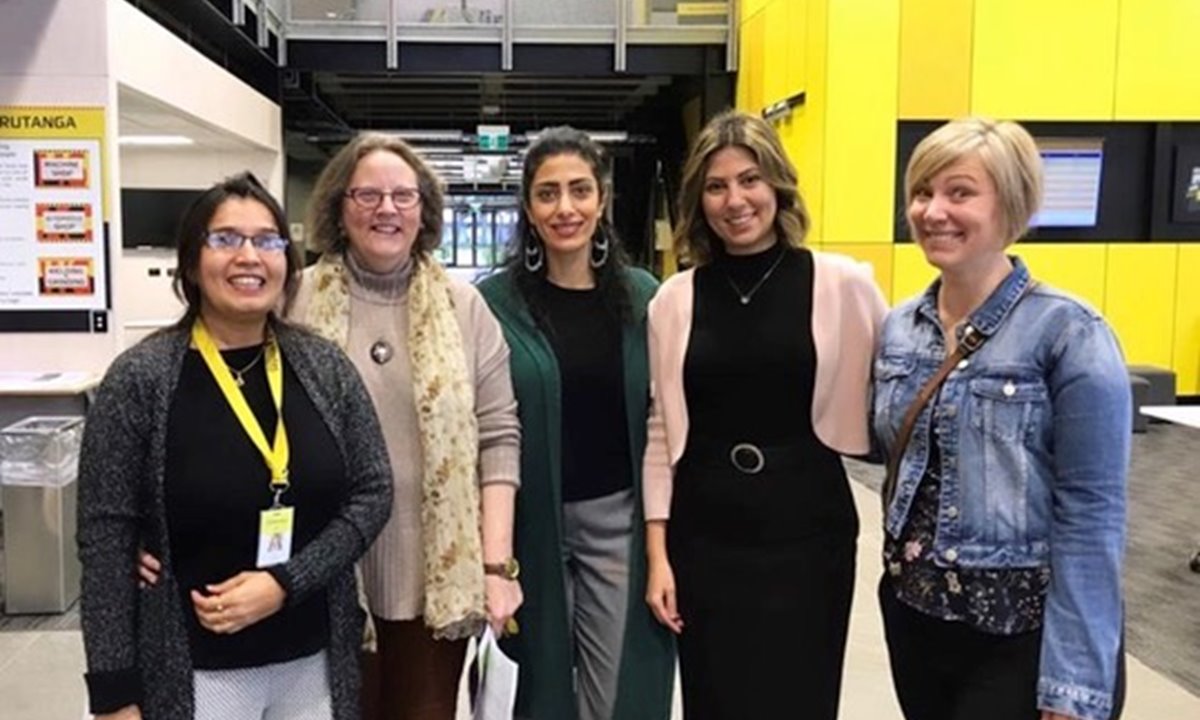Wintec’s women engineers featured in an image on social media recently with the words “We are a diverse engineering team” and were surprised at the attention they got. The post was so popular, it generated a notification from LinkedIn they were trending on #engineering.
Engineering may often be considered a man’s world but Wintec Engineering teachers, Dr Maryam Moridnejad, Sarla Kumari, Josy Cooper, Elena Eskandarymalayery and their manager, Dr Trudy Harris don’t agree. They want to see more diversity in their engineering classes, and they are on a mission to change up the ratio.
The five women have a mix of mechanical, civil and electrical qualifications.
Wintec Group Director, Trades and Engineering and Industrial Design, Dr Shelley Wilson says women make up 5-10 percent of engineering students at Wintec and the future is looking bright for graduates who can expect diverse opportunities.
“We work closely with industry to train engineers for an evolving workplace which is responding to new demands for technology, climate change and the influence of COVID-19.
“The scope for engineering careers is exciting and graduates can aim for careers in the manufacturing, roading and other areas of infrastructure, power industry, chemical and mechatronics areas for example. These environments are attracting a diverse workforce.”
Kumari says the perception of engineering sometimes doesn’t help.
“Many people believe engineering is about working outside, getting your hands dirty and a study path with a maths-heavy study component.
“Engineering offers broad opportunities and engineers mainly work in an office designing and creating projects for people.”
Cooper agrees that engineering is people orientated as well as project focussed.
“Everything you design has to work with and be for people. It can be really compelling as a career.”
Dr Moridnejad, who shared the trending post about diversity on LinkedIn says that in her home country, Iran, with more restrictions on women, there are more female engineers than in New Zealand.
Surprised at the female engineering student ratio in New Zealand, and curious, (a trait with engineers), she wanted to find out why.
Since last year, she collaborated with Cooper and Associate Professor Wendy Fox-Turnbull from the University of Waikato on a research project to find out influencing factors and barriers for selection of engineering pathways for women in New Zealand.
“So far, in the New Zealand context, we found that barriers to selection of engineering pathway for females include the school system; a lack of career and subject choice guidance available to students at school, a lack of promotion of the profession, and society’s perception of engineers as being masculine – ‘a tradie working in a workshop’.
“Unfortunately, the low number of women studying engineering at tertiary level is not just a problem here in New Zealand. Worldwide around 10 percent of students studying engineering are females. The lack of female participation in engineering fields at the tertiary education level has been a barrier for diversity and equality in both the engineering industry and associated professions.
“We are hearing from teenage girls that stereotypes on what girls can and can’t do, persist in our community,” says Dr Moridnejad.
Dr Moridnejad who has a PhD in civil and environmental engineering from the University of Auckland and a master’s degree in water engineering from the University of Tehran is sharing her love of engineering by profiling engineers, and their study journeys on Instagram. She invites anyone interested to follow her @maryam.moridnejad.
Recently Wintec’s Engineering team created a challenge for students from Sacred Heart Girls’ College, Melville High School and St John’s College in Hamilton. The students had all shown interest in a career in Engineering and signed up for a STAR Engineering Taster Day.
Eighteen students took part each day, over three days.
The challenges they created covered the full suite of engineering practice offered at Wintec – civil, mechanical and electrical.
The students had to design and build a solar-powered moon rover and a bridge for it to cross.
“It just wouldn’t be engineering without a bridge,” said Cooper.
The girls from Sacred Heart College managed the fastest time.
“They nailed it!” laughs Cooper. “By lunchtime they were done.”
“The girls listened, and they were organised, but the boys had the edge on the bridge,” adds Kumari.
The boys from St John’s and Melville built a very structurally sound bridge.
“There are very few girls considering engineering as a career and when there are women in engineering, they do well,” says Cooper.
The engineers agree that now is a great time to study
“The Government is spending money on infrastructure so there is potential for employment,” says Kumari.
“There are broad opportunities in mechanics, electrical and civil engineering and for starters, the Diploma in Engineering is free and really popular with employers.”
Wintec offers degree, diploma and certificate courses in Mechanical, Civil and Electrical Engineering.



.jpg?sfvrsn=14164ce5_1&mode=crop&width=770&height=462&format=jpeg&quality=85)
.jpg?sfvrsn=414c0434_1&mode=crop&width=770&height=462&format=jpeg&quality=85)
.png?sfvrsn=16db4cf2_1&mode=crop&width=770&height=462&format=jpeg&quality=85)